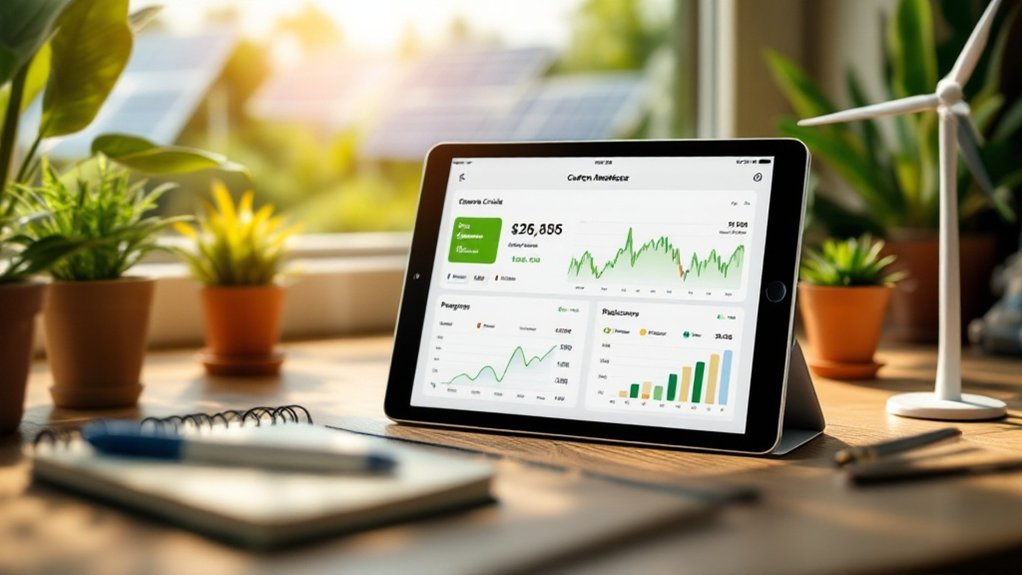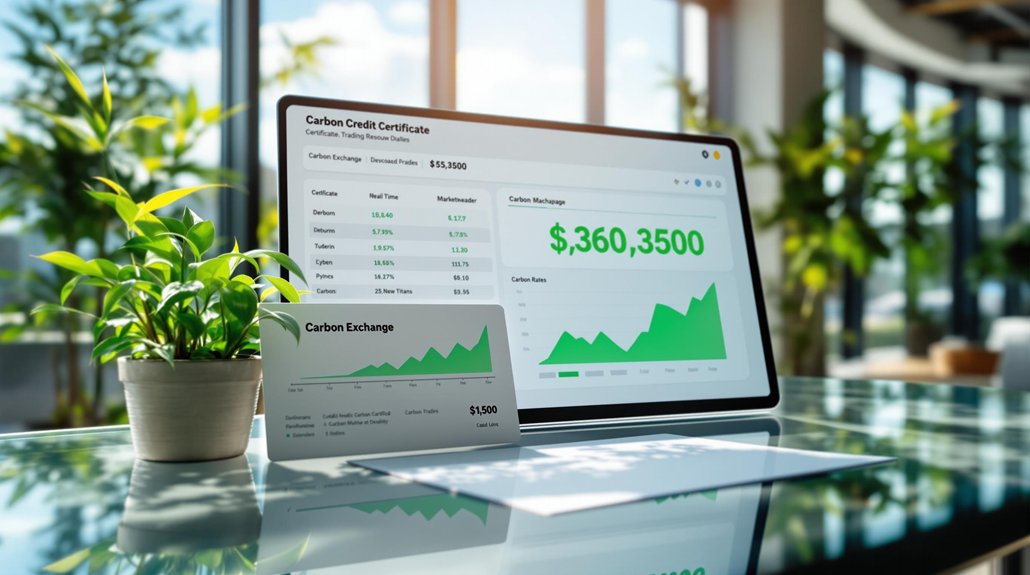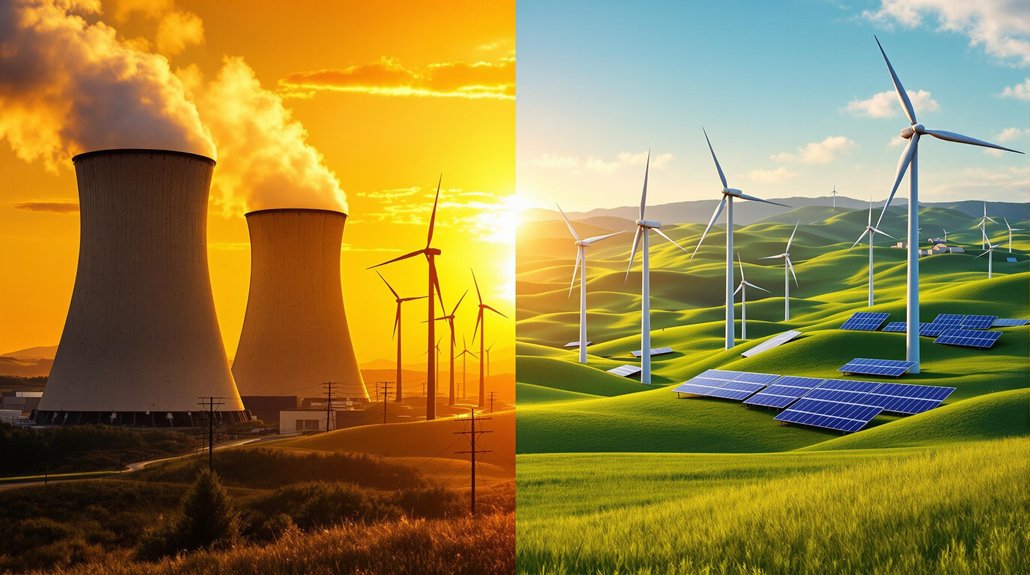Carbon credits can be purchased through digital marketplaces like Xpansiv and Climate Trade, where transactions happen directly. Brokers such as South Pole and CarbonBetter help navigate verification processes. Buyers can also work directly with project developers certified by organizations like Verra or Gold Standard. Individuals have access to retail platforms including Terrapass and Cool Effect. Major companies like Microsoft and Google have established their own carbon removal initiatives. The market offers options for every type of buyer.

Looking to offset your carbon footprint? The carbon credit market offers several ways to purchase credits that fund projects reducing greenhouse gas emissions. These credits are available through various platforms, each with different approaches to carbon offsetting.
Carbon credit exchanges provide digital marketplaces where buyers can purchase credits. Major exchanges include ACX (AirCarbon Exchange), CBL Markets, European Energy Exchange (EEX), Xpansiv, and Climate Trade. These platforms connect buyers directly with carbon credit projects worldwide. Xpansiv has been operating a transparent, central exchange for the voluntary carbon market since 2009.
Many companies work with brokers and intermediaries who help navigate the carbon market. Organizations like ClimateSeed, Carbon Credit Capital, CarbonBetter, South Pole, and First Climate connect businesses with verified carbon reduction projects. They handle the complex verification process so buyers don’t have to. Brokers like South Pole play a crucial role in ensuring credit quality and facilitating transactions between buyers and sellers.
Buyers can also purchase credits directly from project developers. The largest carbon crediting programs include Verra, Gold Standard, American Carbon Registry, Climate Action Reserve, and Plan Vivo. These organizations develop standards and certify projects that reduce emissions.
For individuals, retail platforms make carbon offsetting accessible. Terrapass, Carbonfund.org, Cool Effect, Atmosfair, and Myclimate offer simple ways for people to calculate and offset their emissions. These platforms focus on making carbon offsetting understandable for everyday consumers. The carbon removal marketplace is experiencing rapid growth with projections indicating it will reach multi-billion dollars before 2030.
Many corporations have established their own carbon removal programs. Stripe Climate, Shopify Sustainability Fund, Microsoft Carbon Removal, Amazon Climate Pledge Friendly, and Google Carbon Removal support innovative climate technologies and carbon reduction projects.
Government-led initiatives also play a key role in carbon markets. Programs like California’s Cap-and-Trade, Regional Greenhouse
Frequently Asked Questions
How Long Do Carbon Credits Last Once Purchased?
Carbon credits don’t have a fixed expiration date. They remain valid until they’re retired to offset emissions.
While some standards suggest using credits within 5 years of their vintage year, many can be held indefinitely in registry accounts.
Credit value may change over time due to market shifts, regulatory changes, or advancing technology.
Nature-based credits face additional permanence considerations due to potential reversal risks.
Can Individuals Claim Tax Benefits From Buying Carbon Credits?
Individual tax benefits for carbon credit purchases aren’t clearly defined by the IRS. Currently, people can’t directly deduct these purchases on taxes.
However, they may claim a deduction if they donate carbon credits to a qualified 501(c)(3) charity and itemize their deductions.
Alternative climate-friendly tax incentives exist for renewable energy, electric vehicles, and home efficiency upgrades.
Future legislation may clarify tax treatment as carbon markets grow.
What’s the Minimum Investment Amount for Carbon Credit Purchases?
Minimum investment amounts for carbon credits vary widely across different platforms.
Individuals can purchase credits for as little as $10-$50 through retailers, while direct purchases from project developers typically require $5,000-$10,000 minimums.
Carbon credit exchanges often set 100-1,000 ton minimums.
For those seeking smaller entry points, ETF shares start around $10-$100, and some funds offer fractional shares for under $100.
How Are Carbon Credit Prices Expected to Change in Future?
Carbon credit prices are expected to rise considerably in coming years. Analysts predict average prices could reach $25-$30 per ton by 2030 and $30 per ton by 2040.
To meet Paris Agreement targets, prices might increase to $40-$80 per credit. Tech-based removal credits could command $100-$300 per ton by 2030.
The global market value may grow to over $50 billion by 2030, potentially reaching $1.1+ trillion annually by 2050.
Can I Sell My Carbon Credits if I Change My Mind?
Selling carbon credits after purchase is possible but complicated.
Most contracts run 10+ years with early termination penalties. Sellers may need to navigate contractual obligations, market fluctuations, and regulatory approvals.
Some programs allow credit transfers to new landowners. Alternative options include banking credits for future use or transferring them to affiliated entities.
Secondary markets exist but are less liquid than primary markets.









